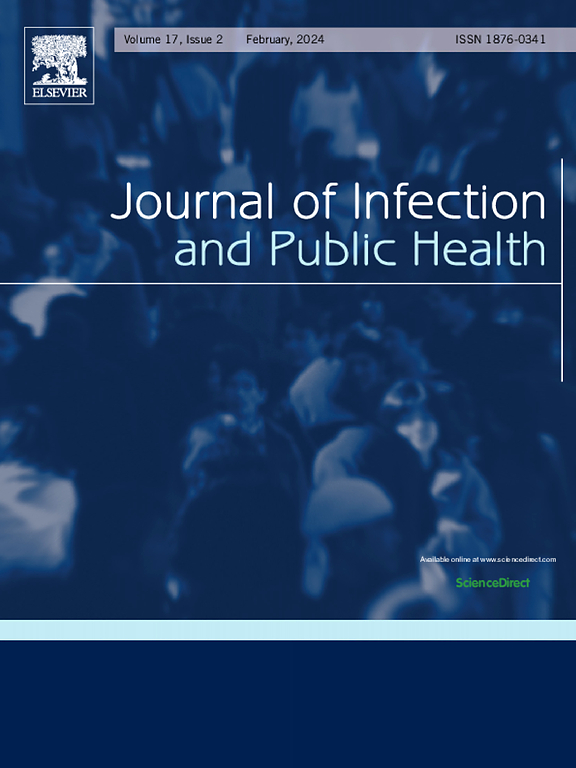A post-COVID-19 upsurge in Group A Streptococcus in the Czech Republic was driven by emm1 and emm12 with shared virulence factors
IF 4
3区 医学
Q1 INFECTIOUS DISEASES
引用次数: 0
Abstract
Background
In 2023, a significant increase in Streptococcus pyogenes, Group A Streptococcus (GAS) culture positivity was observed in Czech microbiological laboratories. We conducted a multicentre study to obtain epidemiological data and characterise circulating strains.
Methods
Eleven microbiology departments provided data on single-patient GAS-positive cultures from 2017 to 2023. Additionally, 10 consecutive, single-patient GAS isolates from 12 hospitals were submitted in May 2023 for whole-genome sequencing and antimicrobial susceptibility testing.
Results
In 2023, there was a significant increase in GAS-positive cultures compared to the periods of 2017–2019 (p = 0.002), 2020–2021 (p < 0.00001), and 2022 (p = 0.001), with a disproportionate increase in children. Among 120 isolates, 12 different emm types and 16 multi-locus sequence types (STs) were identified, with emm1 (ST28, 35.0 %) and emm12 (STs 36, 101, 242, 1366, 32.5 %) being the most prevalent. Clonal clustering of emm1 and emm12 isolates across different study sites and geographic regions was demonstrated by whole-genome MLST analysis. When searching for shared virulence genes exclusive to emm1 and emm12 but absent in other emm types, immune evasion and colonisation factors (the streptococcal inhibitor of complement-sic gene in emm1, the distantly related sic-drs gene in emm12, and the sda1 gene in both) were identified.
Conclusions
An upsurge in GAS infections, predominantly caused by emm1 and emm12, was identified in the Czech Republic. The combination of shared virulence factors, altered herd immunity and naïve immunity in children, resulting from contact precautions measures during the COVID-19 pandemic, may have contributed to their increased spread.
emm1和emm12具有共同的毒力因子,导致捷克共和国A群链球菌在2019冠状病毒病后激增
背景:在2023年,捷克微生物实验室发现化脓性链球菌、a群链球菌(GAS)培养阳性显著增加。我们进行了一项多中心研究,以获取流行病学数据并确定流行菌株的特征。方法各微生物科提供2017 - 2023年单例患者gas阳性培养数据。此外,于2023年5月提交了来自12家医院的连续10例单患者GAS分离株,用于全基因组测序和抗菌药敏试验。结果与2017-2019年(p = 0.002)、2020-2021年(p <; 0.00001)和2022年(p = 0.001)相比,2023年gas阳性培养显著增加,其中儿童增加不成比例。在120株分离株中,鉴定出12种不同的emm类型和16种多位点序列类型(STs),其中emm1 (ST28, 35.0 %)和emm12 (st36, 101, 242, 1366, 32.5 %)最为普遍。通过全基因组MLST分析,证实了emm1和emm12分离株在不同研究地点和地理区域的克隆聚类。在寻找emm1和emm12所特有但在其他emm类型中缺失的共有毒力基因时,确定了免疫逃避和定植因子(emm1中互补-sic基因的链球菌抑制剂,emm12中远亲的sic-drs基因,以及两者中的sda1基因)。结论在捷克共和国发现了以emm1和emm12为主的GAS感染激增。在COVID-19大流行期间采取接触预防措施,共同的毒力因素、群体免疫力的改变以及儿童naïve免疫力的改变,可能是导致其传播加剧的原因。
本文章由计算机程序翻译,如有差异,请以英文原文为准。
求助全文
约1分钟内获得全文
求助全文
来源期刊

Journal of Infection and Public Health
PUBLIC, ENVIRONMENTAL & OCCUPATIONAL HEALTH -INFECTIOUS DISEASES
CiteScore
13.10
自引率
1.50%
发文量
203
审稿时长
96 days
期刊介绍:
The Journal of Infection and Public Health, first official journal of the Saudi Arabian Ministry of National Guard Health Affairs, King Saud Bin Abdulaziz University for Health Sciences and the Saudi Association for Public Health, aims to be the foremost scientific, peer-reviewed journal encompassing infection prevention and control, microbiology, infectious diseases, public health and the application of healthcare epidemiology to the evaluation of health outcomes. The point of view of the journal is that infection and public health are closely intertwined and that advances in one area will have positive consequences on the other.
The journal will be useful to all health professionals who are partners in the management of patients with communicable diseases, keeping them up to date. The journal is proud to have an international and diverse editorial board that will assist and facilitate the publication of articles that reflect a global view on infection control and public health, as well as emphasizing our focus on supporting the needs of public health practitioners.
It is our aim to improve healthcare by reducing risk of infection and related adverse outcomes by critical review, selection, and dissemination of new and relevant information in the field of infection control, public health and infectious diseases in all healthcare settings and the community.
 求助内容:
求助内容: 应助结果提醒方式:
应助结果提醒方式:


